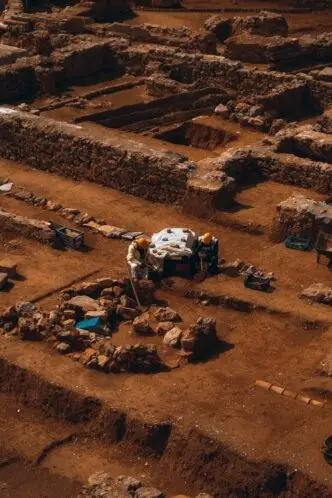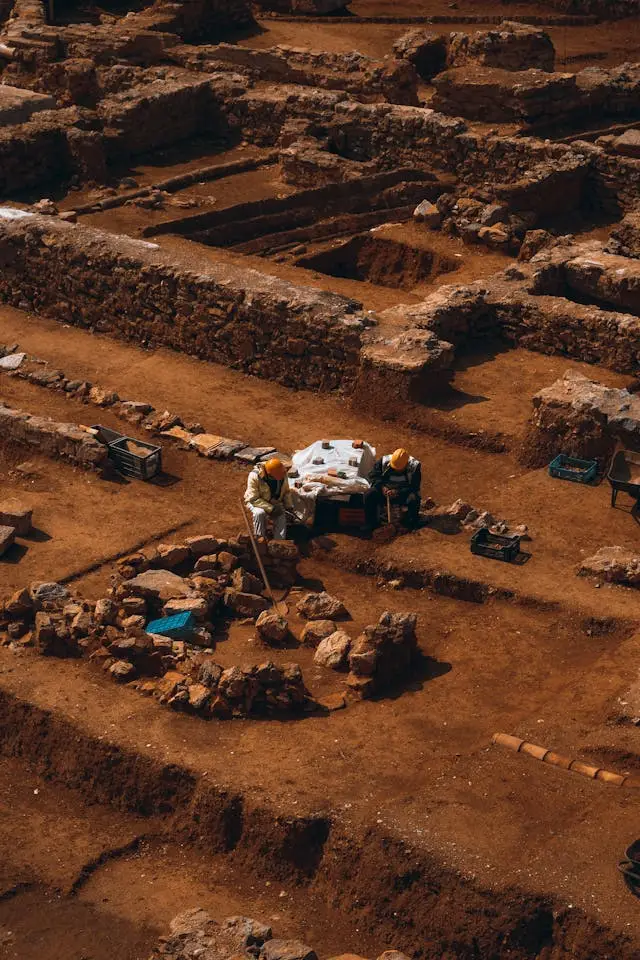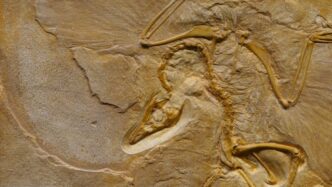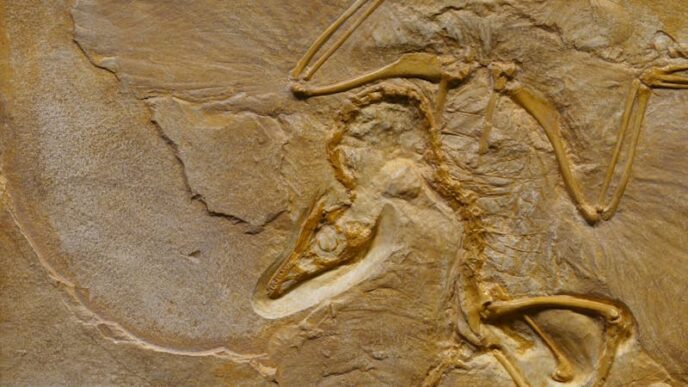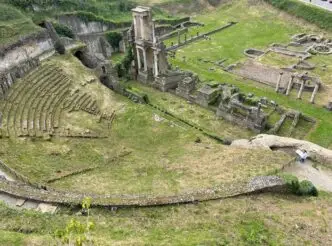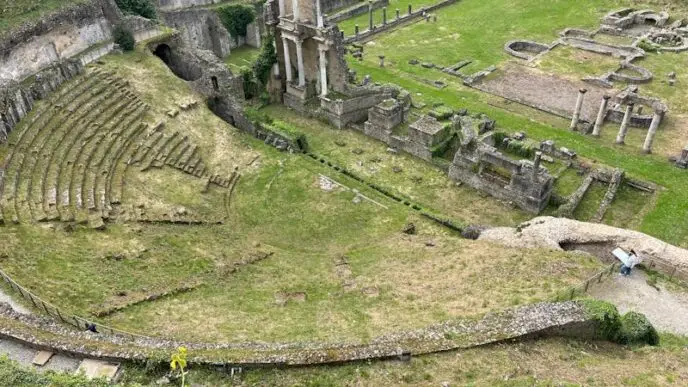Archaeologists were taken aback upon stumbling upon a rare find, a chariot wheel dating back to the Iron Age, during an excavation at the future site of a golf course near Inverness, Scotland. The discovery of the chariot wheel, believed to be over 2,000 years old, sheds new light on the region’s history during the Iron Age.
Experts from the Scottish Archaeological Field School (SAFS), who were conducting the excavation, are thrilled with the significance of the find. The wheel, made of iron and wood, offers a glimpse into the technology and craftsmanship of the period, as well as the mode of transport that was prevalent during the Iron Age.
A Glimpse into the Past
The discovery came during the routine archaeological survey required as part of the planning process for the new golf course. The wheel was found at a depth of approximately one meter and was surprisingly well preserved considering its age. The wheel’s construction suggests that it was part of a large, two-wheeled chariot, a vehicle typically used by the elite of the society during the Iron Age.
The chariot wheel is a significant find for the region, as it offers a view into the lifestyle and transportation methods of the ancient Celtic society. Chariots were not only modes of transport but were also used in warfare and ceremonial practices. The discovery of the wheel could potentially point to the presence of a significant Iron Age settlement in the area.
Preserving the Past for the Future
The SAFS team is currently working on the preservation and restoration of the wheel. Once restored, the chariot wheel will be displayed at the Inverness Museum and Art Gallery, where it can be appreciated by both locals and tourists alike. The discovery also highlights the importance of archaeological surveys in uncovering and preserving the rich historical heritage of the region.
Dr. Fiona Smith, the Director of SAFS, stated in a press release, “This discovery is highly significant. It not only illuminates the technological prowess of our Iron Age ancestors but also provides insight into their lifestyle. We are delighted to be part of this discovery and look forward to further excavations in the area. We are hopeful that there might be more artifacts waiting to be discovered.”
Implications for the Golf Course Project
With the discovery of the Iron Age chariot wheel, the golf course project is expected to be delayed as further archaeological investigations are conducted in the area. The developers of the golf course, however, have expressed their commitment to preserving the historical significance of the site.
John McCallum, the project manager for the golf course development, said, “We are fully supportive of the archaeological work being carried out on the site. We understand the importance of preserving our heritage and are committed to working closely with the archaeological team. The golf course development will proceed with the utmost respect to the historical significance of the site.”
The unanticipated archaeological discovery has sparked a wave of interest among locals and historians alike. While it may temporarily impede the construction of the proposed golf course, the uncovering of a piece of history dating back over two millennia is an exciting find that promises to enrich our understanding of the region’s past.

